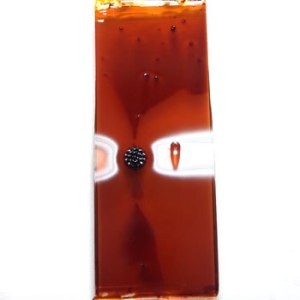Jun 26 2018
 Harvard researchers have developed a dynamic surface with reconfigurable topography that can sculpt and re-sculpt microscale to macroscale features, change its friction and slipperiness, and tune other properties based on its proximity to a magnetic field. (Image credit: Harvard SEAS)
Harvard researchers have developed a dynamic surface with reconfigurable topography that can sculpt and re-sculpt microscale to macroscale features, change its friction and slipperiness, and tune other properties based on its proximity to a magnetic field. (Image credit: Harvard SEAS)
An international group of scientists, headed by Harvard University, have built a dynamic surface with reconfigurable topography. The surface has the ability to sculpt and re-sculpt microscale to macroscale features, modify its slipperiness and friction, and adjust other properties depending upon its proximity to a magnetic field.
The surface was developed by infusing a magnetic fluid in a solid microtexture, and the scientists showed the possibility of using the surface to direct the movement and assembly of micro-scale particles, control the flow and mixing of droplets of millimeter size, or turn adhesive properties on and off at the macroscale.
Multifunctional materials capable of performing various tasks is a new, promising area of research. The demonstrated applications—new forms of reversible, hierarchical particle self-assembly, manipulation and transport of non-magnetic matter in a magnetic field by topography-induced hydrodynamic forces, precisely timed chemical reactions, and rewritable, spatial addressing of directional adhesion, friction, and biofilm removal—are only a small representative sample of ample possibilities this new concept opens up to the imagination.
Joanna Aizenberg, Amy Smith Berylson Professor of Materials Science and Professor of Chemistry and Chemical Biology, Harvard John A. Paulson School of Engineering and Applied Sciences
Aizenberg is also Core Member of the Wyss Institute for Biologically Inspired Engineering at Harvard University.
The study, which has been reported in the Nature journal, was the outcome of an interdisciplinary partnership between applied mathematicians, fluid mechanicists, chemists, materials scientists, physicists, and marine biologists.
The surface has been named FLIPS, acronym for ferrofluid-containing liquid-infused porous surfaces. It is a composite surface formed of two different parts: a micro-structured solid substrate and a ferrofluid, which includes magnetic particles suspended in a liquid. In the absence of a magnetic field, the surface is slick, flat, and smooth. However, upon applying a magnetic field, the ferrofluid responds and dons the shape of the underlying topography. The blend of a structured solid surface with a responsive liquid enables the surface to be ceaselessly re-writable, a type of dynamic Etch-a-Sketch with directional friction, reconfigurable patterning, adhesion, and much more.
It is possible to fine-tune the particular topographical patterns of the surface at the micron, millimeter, and centimeter scales by regulating the magnetic field strength, the ferrofluid properties, the distance of FLIPS from the magnets, and the substrate geometry.
This tunability level relates to the fact that FLIPS has the ability to perform well over a wide range of scales. The scientists showed that FLIPS has the ability to:
- Direct the movement of microscopic objects such as colloidal particles and bacteria, which would be helpful for micro-scale manufacturing and for analyzing the collective and individual behaviors of mobile micro-organism
- Be used in pipes for continuous liquid pumping
- Eliminate biofilm accumulated on its surface
- Function as a reversible adhesive between two large-scale objects
- Coat liquid droplets and use FLIPS’ controllable topography to regulate their movement and delay mixing for accurately timed chemical reactions in small-scale diagnostics
FLIPS is compatible with all types of surfaces and can also be combined with SLIPS, the ultra-slick surface coating, another technology developed in the Aizenberg Lab.
Each of these applications can be further extended. Our results suggest that FLIPS allows much more diverse combinations of functions and capabilities than surfaces that have only a simple, single-scale topographical response. This could be a platform for a lot of future technologies.
Wendong Wang, Former Postdoctoral Fellow, SEAS
At present, Wang is a postdoctoral researcher at the Max Planck Institute for Intelligent Systems in Germany. This study was the result of collaboration between SEAS, the Wyss Institute, the Max Planck Institute, Aalto University School of Science in Finland, and the University of Oslo.
The study was co-authored by Jaakko V. I. Timonen, Andreas Carlson, Cathy T. Zhang, Stefan Kolle, Alison Grinthal, Tak-Sing Wong, Benjamin Hatton, Sung Hoon Kang, Stephen Kennedy, Joshua Chi, Robert Thomas Blough, and L. Mahadevan the Lola England de Valpine Professor of Applied Mathematics, of Organismic and Evolutionary Biology, and of Physics at SEAS from Harvard and Dirk-Michael Drotlef and Metin Sitti from the Max Planck Institute for Intelligent Systems in Germany.
The Department of Energy, the National Science Foundation, and the Max Planck Society supported the study.
FLIPS Multifunctional Surfaces